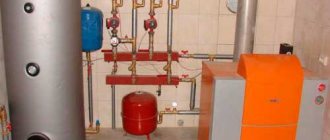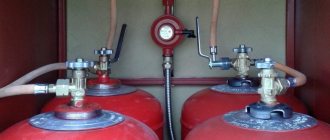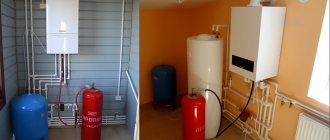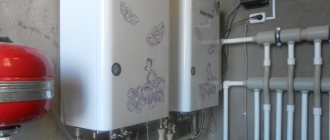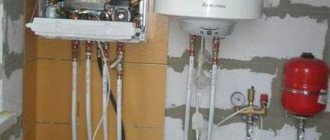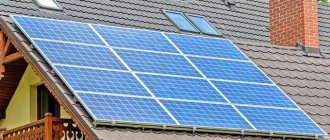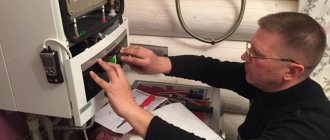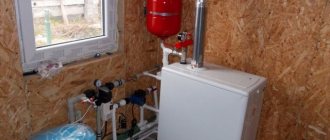Heating with main gas is today the most inexpensive and effective way to make your home warm and cozy. In the absence of main gas, as a rule, electric boilers are used. But what to do if the electric boiler is not suitable due to low network voltage? In this case, it is advisable to consider the option of heating using gas cylinders, and we will tell you how to do this correctly in this article.
Heating with cylinders
Heating a house with cylinders is the fastest and cheapest way to organize the supply of gas-using equipment with propane-butane. It is enough to purchase gas cylinders, fill them, connect them to a common manifold with a pressure regulator, place the equipment in a cabinet - and the group cylinder installation is ready! To combine cylinders, gas trains can also be used, allowing you to disconnect and connect cylinders without stopping the gas boiler, and kits for cylinder installations, designed to automatically disconnect spent cylinders and connect refilled ones.
Heating with cylinders
However, heating a private home with bottled gas has a number of disadvantages:
- the greater the power of the gas boiler, the greater the number of cylinders there should be in the installation;
- the need to frequently replace used cylinders;
- impossibility of complete gas production at subzero temperatures;
- gas cylinders are a source of increased danger.
Advantages and disadvantages of units
Gas equipment for heating a private home has the following advantages:
- Autonomy and independence from the central highway, changing prices and emergency situations.
- High efficiency rates - 92-95%. Sometimes the values reach 97%.
- Quiet operation.
- Ease of maintenance and repair in case of failures. The system is easy to maintain, since all maintenance consists of replacing fuel filters, injectors and cleaning the coolant.
- Possibility of converting the system to work with centralized gas supply. If you want to connect it to the highway, you will not have to buy additional equipment.
- Long service life. For some models it reaches 25 years.
- Work safety. The fuel remains non-flammable even at high temperatures inside the chamber.
Non-volatile units are available on the market, guaranteeing complete autonomy in remote communities.
The disadvantages of the equipment include the following points:
- The need for simultaneous use of 3-4 cylinders. In this case, a gas reducer is used to connect the cylinders to the boiler.
- Fuel tanks should not be installed near the boiler - it is better to place them in adjacent rooms with a working ventilation system.
- When performing installation work, it is important to be careful and careful.
- The desire to re-equip the system will require considerable financial investments. Sometimes they reach 30-50% of the cost of the unit.
Heating from a mobile gas holder
A mobile gas holder is a quick and affordable solution to the problem of temporary gas supply, as well as gas supply to a dacha or small country house. It is a mini gas holder with a volume of 598 liters, mounted on a trailer and having a heating system.
Mobile gas tank for heating a house with propane
Has a lot of advantages:
- gas is heated using the coolant of the house heating system, so stable evaporation of gas occurs at any ambient temperature;
- quick-release connections provide easy connection of the mobile gas tank to the gas pipeline and heating system;
- the trailer allows you to transport the mini-gas tank to a gas station for refueling;
- safety equipment and a level gauge that allows you to control the degree of filling of a mobile gas tank provide increased safety compared to gas cylinders;
- can be sold on the secondary market.
Flaws:
- takes up space near the house or outbuilding;
- registration of the trailer with the traffic police;
- independent transportation to a gas filling station, because due to the small volume it is difficult to order gas for home delivery;
- the need to use antifreeze in the heating system;
Connection diagram to the boiler
The connection of the working elements of the system is carried out according to a special scheme using a gearbox. The device converts liquid fuel into a gaseous mixture and supplies it to the boiler chamber. If the gas supply is provided by several tanks, you will need to purchase reducers for each tank.
Components for balloon heating systems
The main components of the system are:
- Boiler with burner.
- Tanks 50 l.
- Gearboxes.
- Locking mechanisms.
- Rubber fabric sleeve.
- Ramp.
The installation diagram is simple and understandable even for a beginner.
Heating from a gas holder
Gas consumption for heating 1 m² of area of a country house, taking into account hot water supply, is on average 25–30 liters of gas per year, i.e., heating a cottage with an area of 200 m² with permanent residence requires about 5000–6000 liters of LPG per year. Gas consumption greatly depends on the quality of the house’s thermal insulation, mode of residence, presence of a swimming pool, etc.
Using a gas tank for heating a home is the most comfortable way to supply gas-using equipment with liquefied gas.
Liquefied gas for heating is taken from a special container - a gas holder
The advantages of gas tank heating at home include the following:
- there is no need to carry and carry cylinders or transport the tank to a gas filling station;
- an underground gas tank does not take up space on the site and does not spoil its appearance;
- the propane-butane mixture located inside the gas holder intensively evaporates almost completely due to geothermal heat;
- the volume of the gas tank can be selected so that its refilling will be required once a year or even less often, and draining gas from the tanker into the gas tank takes no more than 20–60 minutes;
- the volume of the gas holder can be sufficient to operate a gas stove, boiler and power plant at the same time;
- due to the presence of built-in safety equipment, underground placement and the use of a two-stage pressure regulator with a safety relief valve (PSV), the gas holder is less dangerous than a gas cylinder;
- The external and internal gas pipelines are made permanently, and a thermal shut-off valve and a gas alarm with a shut-off valve are installed on the internal gas pipeline, which further increases the safety of gas use.
The disadvantages of a gas holder for heating include its relatively high price and the need for excavation work.
Types of products by location
A gas boiler using liquefied gas can be floor-standing or hanging. Depending on the installation method, it may have specific properties that increase its practicality and attractiveness. Based on the information received, home owners can determine which option will be most optimal for their home.
Floor equipment
Floor-standing models are especially popular because they are characterized by high power and comfort. Such units are capable of serving not only small country houses, but also large-sized cottages and hotels. The main working element is a gas burner with highly efficient heat transfer.
The device is stable even during pressure surges, and its service life reaches 25 years if the operating rules are followed.
The units are equipped with heat exchangers made of steel or cast iron. The first option has reduced weight, but is quite fragile and sensitive to shock; it can last a short period of time. Cast iron elements are heavier, but durable.
Advanced modules are equipped with auxiliary elements that make them safer and more reliable. Such components include temperature sensors, draft, gas, pressure level controllers, thermostats, shut-off valves and other parts.
Depending on the design features, the unit can be equipped with electronic or piezo ignition systems. Representatives of the first group are activated automatically, and fuel consumption is minimized, since the system does not have an igniter with a flame.
Wall devices
Devices designed for wall mounting are characterized by compact dimensions and ergonomic design. They take up little space and can be installed in rooms with limited space and complex layouts.
For error-free installation of the system, you should use professional help. Devices must be installed taking into account the safety standards specified in SNiP standards.
In terms of their set of functions, wall-mounted models are practically no different from floor-mounted ones, but their power is much lower. Because of this, the use of installations in large-sized cottages is not justified. However, in terms of efficiency and operating comfort, they are superior to the floor-standing type.
Calculation of the need for liquefied gas
Preparatory measures for installing this type of gas equipment are very important. Miscalculations by an insufficiently qualified designer or low professional training of builders subsequently become very expensive. Heating systems do not reach their rated specifications, and to ensure normal living conditions it is necessary to increase fuel consumption.
When starting to purchase equipment, you need to make sure that it meets the needs of your home. To do this, you can use the practically established ratio. To provide high-quality heat, you need to spend one kilowatt-hour of thermal energy for every 10 square meters of heated premises. In this way, you can obtain primary data on the required boiler power.
When considering the line of products offered on the market, you need to select a product that is suitable for the given parameter.
It should be borne in mind that the value obtained in this way concerns only heating; the consumption for other gas appliances must be calculated separately, taking into account the intensity of their use.
CHOICE
“Initially, we did not plan to buy this particular system,” says Elena. “We read reviews on the Internet and compared prices.” According to her, the option of heating with electricity was no longer needed - it is often turned off. In terms of costs, a diesel boiler is approximately the same as a gas holder, but diesel fuel also comes with smell and noise. We chose gas. The system is Russian, with installation - 400 thousand rubles.
“We have a boiler with a capacity of 4,800 liters; a full refill (70 thousand rubles) lasts for eight months,” shares Erokhina. — In winter, we come here only on weekends. On weekdays we reduce the temperature to 18 degrees so that the flowers don’t die.”
LPG equipment operates autonomously
The fuel enters the house in a gaseous state, so all equipment operates as usual. Liquefied hydrocarbon is suitable for connecting standard household gas equipment:
- boiler;
- water heating column;
- plate;
- boiler;
- convector;
- backup power generator.
The only condition is that the equipment needs to be adjusted: adjusting the gas valve and replacing fuel jets. The cost of conversion is 12,000 rubles plus the cost of injectors. After a one-time initial setup, no intervention is required.
By the way
If you want to prepare your boiler room for the transition to LPG, talk to an engineer.
Consult
